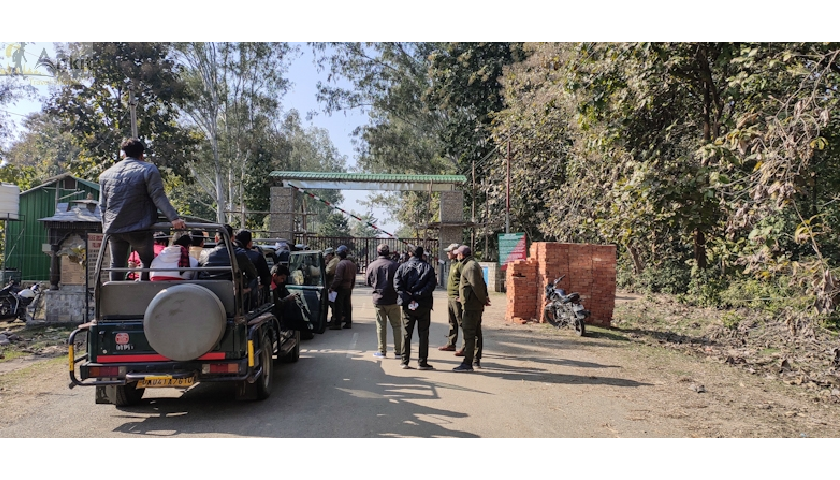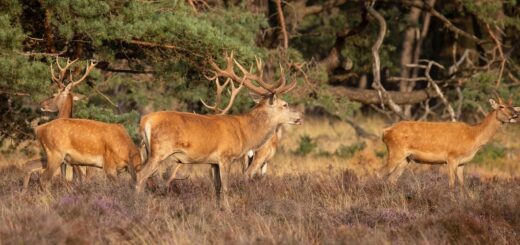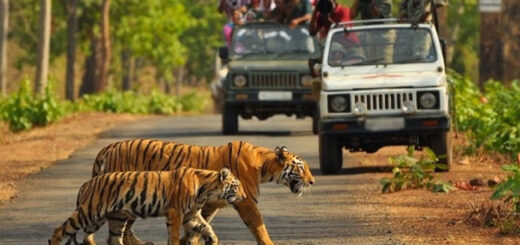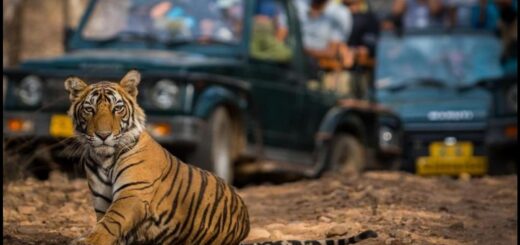Best Safari Zones in Jim Corbett National Park
Corbett National Park, located in the northern Indian state of Uttarakhand, offers visitors the opportunity to explore its rich flora and fauna through various safari options, including Jeep safaris. The park is divided into five different safari zones, each offering a unique wildlife experience.
Here are the Jeep safari zones in Corbett National Park:
Bijrani Safari Zone: The Bijrani Safari Zone is located on the southern edge of the park and is known for its diverse wildlife, including tigers, elephants, deer, and various bird species.
Dhikala Safari Zone: The Dhikala Safari Zone is located in the core area of the park and is known for its dense forests and grasslands. Visitors to this zone have the chance to spot tigers, leopards, and Asiatic elephants.
Jhirna Safari Zone: The Jhirna Safari Zone is located on the southeastern side of the park and is known for its open grasslands, making it an excellent spot for bird watching.

Durga Devi Safari Zone: The Durga Devi Safari Zone is located in the northeastern part of the park and is known for its rugged terrain and unique flora and fauna, including the rare mahseer fish and gharials.
Sitabani Buffer Zone: The Sitabani Buffer Zone is located on the southern edge of the park and is known for its scenic beauty and diverse wildlife, including tigers, leopards, and sloth bears.
Garjia Safari Zone: The Garjia Safari zone in Corbett is recently opened tourism zone by forest department. This zone is also blessed with an ample variety of flora and fauna. Total number of 30 jeeps are allowed to enter inside the zone in one slot.
It is important to note that each zone has a limited number of entry permits available each day, so it is recommended to book in advance. Also, only registered Jeeps and drivers are allowed to enter the park for safari, so it is advised to hire a Jeep and driver from a registered vendor to ensure a safe and enjoyable experience.
Geographical facts of Corbett National Park
Here are some geographical facts about Jim Corbett National Park:
Its Splendid Location: Jim Corbett National Park is located in the northern Indian state of Uttarakhand, and it covers an area of 520 square kilometers.
High Altitude: The park’s altitude ranges from 360 meters to 1,040 meters above sea level.
Prominent Rivers: The park is situated at the foothills of the Himalayas, and it is crisscrossed by several rivers and streams, including the Ramganga River, the Kosi River, and the Sonanadi River.
Terrain: The park’s terrain is rugged and varied, with hills, valleys, plateaus, and grasslands. The park also has dense forests of sal, teak, bamboo, and other tree species.
Climate: Jim Corbett National Park has a subtropical climate, with hot summers and cold winters. The monsoon season starts from June and lasts till September.
Biodiversity: The park is home to a diverse range of flora and fauna. It has over 500 species of plants, 600 species of birds, and 50 species of mammals, including tigers, elephants, leopards, deer, and wild boars.
Buffer Zone: The park has a buffer zone of over 820 square kilometers that surrounds its core area, providing a habitat for wildlife to move freely and safely. The buffer zone also has several villages and human settlements, which the park authorities work to mitigate human-wildlife conflict.
Jim Corbett National Park’s geography and location make it a unique and valuable ecosystem, providing habitat to a wide range of species and an important destination for eco-tourism in India.



2 Responses
… [Trackback]
[…] Here you can find 44970 additional Information to that Topic: corbettnationalpark.in/blog/best-safari-zones-in-jim-corbett-national-park/ […]
… [Trackback]
[…] Info on that Topic: corbettnationalpark.in/blog/best-safari-zones-in-jim-corbett-national-park/ […]